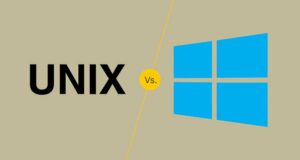Operating systems (OS) form the backbone of modern computing, orchestrating hardware and software interactions. Their evolution from the early days of mainframes to the current era of versatile mobile devices reflects technological advancement and innovation.
Understanding Operating Systems: A Historical Perspective
The inception of operating systems can be traced back to the 1950s when mainframe computers dominated the computing landscape. However, the breakthroughs in OS development became more prominent in the 1960s with IBM’s OS/360, which standardized the operating system for mainframes. Since then, the journey of operating systems has been characterized by continuous innovation and adaptation to technological shifts.
Key Milestones in Operating System Development
- Unix: The Pioneer of Modern OS
- Unix, developed in the late 1960s, laid the foundation for many modern operating systems. Its multitasking, multi-user capabilities, and portability set a benchmark for future OS development.
- Microsoft Windows: Revolutionizing Personal Computing
- Windows 1.0, introduced in 1985, marked Microsoft’s foray into the operating system market. Its user-friendly interface and widespread adoption transformed personal computing, paving the way for subsequent Windows iterations.
- Macintosh OS: Apple’s Innovation
- Apple’s Macintosh Operating System, renowned for its intuitive design and stability, redefined user experiences in the computing world, contributing significantly to the graphical user interface (GUI) revolution.
- Linux: The Open Source Revolution
- Linux, conceived in 1991, spearheaded the open-source movement. Its flexibility, security, and community-driven development model made it a prominent choice for various platforms, fostering a diverse ecosystem of distributions.
Modern Operating Systems: Diverse Ecosystems

- Windows OS: Continual Upgrades and Versions
- Microsoft’s Windows 10, the latest flagship OS, emphasizes user experience, security, and cross-platform integration, aiming to provide a unified experience across devices.
- macOS: Seamless Integration and Design Elegance
- Apple’s macOS Big Sur embodies a blend of aesthetics, performance, and ecosystem integration, empowering creativity and productivity across its line of devices.
- Linux Distributions: Varied and Specialized
- From Ubuntu to Fedora, Linux distributions cater to diverse user needs, offering customization and robustness across devices, servers, and embedded systems.
The Role of Operating Systems in Contemporary Computing
- Mobile Operating Systems: Powering Smart Devices
- Android and iOS dominate the mobile OS landscape, enabling a vast array of smartphones and tablets, each with its unique features and app ecosystems, reshaping how individuals interact with technology on-the-go.
- Embedded Operating Systems: Invisible Yet Essential
- Embedded OS like RTOS (Real-Time Operating Systems) operate silently behind the scenes in devices like smart appliances, automobiles, and industrial machinery, ensuring seamless functionality and reliability.
SEO Implications and Importance of Operating Systems
Understanding the landscape of operating systems is crucial for web developers and marketers. Given the diverse OS preferences among users, optimizing websites and applications for compatibility across multiple platforms becomes paramount for better reach and user engagement. Additionally, understanding the nuances of different OS environments aids in crafting targeted marketing strategies for specific user demographics.
Conclusion
The evolution of operating systems mirrors the rapid pace of technological advancement. From mainframes to smartphones, operating systems have shaped the way we interact with computers and technology. Staying abreast of the latest OS trends and optimizing content and applications for various platforms will remain crucial in the ever-evolving digital landscape.
External Links for Further Reading:
- History of Operating Systems – Computer Hope
- Evolution of Operating Systems – TechSpot
- Microsoft Windows History – Microsoft.com
- A Brief History of Apple’s Mac OS – Lifewire
- Introduction to Linux – The Linux Foundation
This comprehensive guide aims to elucidate the intricate journey of operating systems, highlighting their significance, evolution, and relevance in contemporary computing environments. Understanding these systems’ historical context and modern-day implications can significantly impact businesses and developers aiming to create seamless user experiences across diverse platforms, ultimately contributing to a more interconnected digital world.




